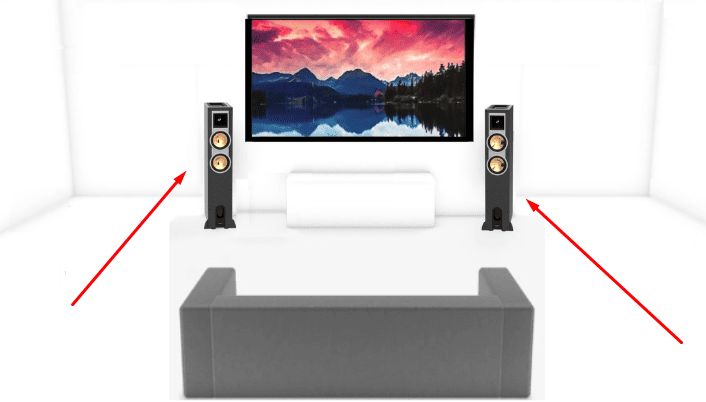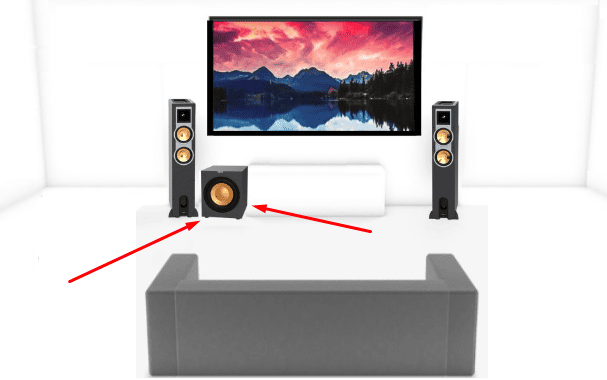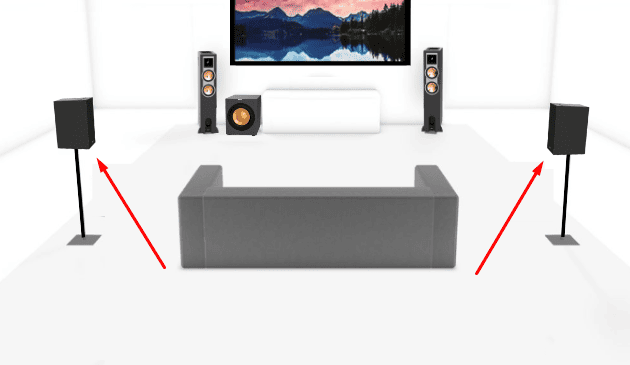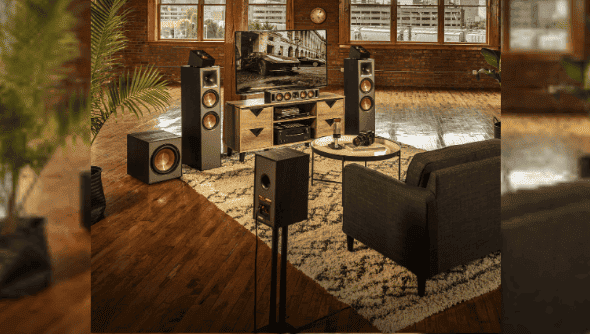This Post may contain affiliate links, when you purchase through links on our site, we may earn an affiliate commission at no extra cost to you. Here’s how it works.
Selecting the right speakers for your stereo system can greatly enhance audio quality, but there are so many options available to choose from.
Table of Contents
ToggleWhether you’re an audiophile looking for the best sound quality choosing the right speakers is crucial for getting the most out of your stereo system.
Consider Before Choosing Speakers for Stereo System:
It’s not a single thing to tell one sentence, there are many things you should consider before choosing the right Stereo sound system. Here are all of them:
Speakers Type:
Different types of speakers fulfill various listening preferences and room environments. Understanding the different types will help you narrow down your options:
- Floor-standing Speakers: These large speakers offer powerful sound and are ideal for big rooms or home theaters. They provide deep bass and a full-range sound.

- Bookshelf Speakers: Compact and versatile, bookshelf speakers are perfect for smaller spaces. For a smaller stereo setup, these are often the go-to choice.
- Satellite Speakers: Typically paired with a subwoofer in a surround sound system, satellite speakers are small but can still deliver. They are ideal for use in multi-channel setups.
- Subwoofers: If you want to add deep bass to your stereo system, a dedicated subwoofer is the way to go.

Sound Quality: What You Hear Matters Most
The main reason for choosing a speaker is to enhance your listening experience. Sound quality is the number one factor to consider.
- Frequency Response: The range of sound a speaker can produce is measured in Hertz (Hz). For most listeners, a range of 40 Hz to 20,000 Hz (20 kHz) will suffice and Subwoofers cover the low frequencies (20 Hz–200 Hz).
- Impedance: Measured in ohms, the impedance of a speaker affects how much power it draws from the amplifier. Most modern stereo systems work for 4 to 8 ohms.
- Sensitivity: This measures how efficiently a speaker converts power into sound. A higher sensitivity rating (above 90 dB) means that the speaker can produce a louder sound with less power.
According to the Room’s shape & size:
The size of your room are critical factor to consider while choosing a stereo setup. A large room may require floor-standing speakers to fill the space with sound, while a smaller room might benefit from compact bookshelf speakers.
- Room Size: Larger rooms need speakers that can move more air and produce higher volumes without distortion. Smaller rooms may be better suited to smaller speakers.
- Room Shape: If your room shape is not in regular shape, you may need to consider it.
Speaker Placement:
The placement of speakers impacts sound quality, so be sure to think about where they will go. Make sure those speakers are easy to place anywhere.
- Ideal Placement: Ideal speaker placement is essential for achieving the best sound. The speakers should be positioned at ear level and pointed toward the listener.
For example: If you want to place speakers on both sides of your seating area choosing surround speakers pair will be the best option.

Power Handling:
Power handling is important to ensure that your speakers and amplifiers are well-matched.
- RMS Power: The continuous power a speaker can handle without distortion. The speaker’s RMS rating should match or exceed the power output of your amplifier.
- Peak Power: The maximum power a speaker can handle in short bursts, make sure those speakers are capable of doing that.
Impedance Matching:
Most stereo amplifiers are designed to work with speakers that have an impedance of 4, 6, or 8 ohms.
- 4-Ohm Speakers: These speakers require more power but provide a louder sound. They are ideal for use with high-power amplifiers.
- 8-Ohm Speakers: These speakers are more common and work with most home stereo systems.
Brand Reputation and Reviews:
Brand reputation can often be an indicator of quality. A few names consistently stand out for their performance, durability, and customer feedback:
- Bowers & Wilkins
- Klipsch
- Sonos
- JBL
- Sony
- Polk Audio
Before making your decision, check on YouTube and Google to see user reviews and expert opinions. If it is possible visit the nearest store and take a real demo.
Budget: How Much Should You Spend?
Speakers come in a wide range of price points, and it’s important to find something that fits your budget. Generally, speakers are a long-term investment, so it’s worth spending a bit more for better sound quality.
- Entry-Level: For casual listening and smaller rooms choose good-quality speakers for $100 to $300 per pair.
- Mid-Range: $300 to $800 per pair will get you much better sound quality, deeper bass, and a more balanced sound.
- High-End: Over $1,000 per pair, you can expect audiophile-level sound quality, including impeccable clarity.
Design and Aesthetics:
Speakers come in many different shapes, sizes, and finishes. The appearance of the speakers may also be important, especially if they are part of your living room decor.

Choose speakers that complement the style of your room, whether that means sleek modern designs or more traditional wooden finishes.
Additional Features: Wireless, Bluetooth
In addition to traditional wired setups, many speakers offer additional features such as wireless, Bluetooth, and many more.
- Wireless Speakers: Bluetooth or Wi-Fi-enabled speakers allow you to stream music without the need for additional cables.
- Smart Speakers: Many modern speakers come with smart assistant integration (like Alexa or Google Assistant) for voice control.
How do I add more speakers to my home stereo?
Adding more speakers to your home stereo system can enhance your audio experience. After adding more speakers on stereo setups, this setup will be called a surround sound setup.
Mostly added speakers will depend on your receiver. Also, the process depends on the type of stereo system you have and how many speakers you want to add.
- Check Receiver Compatibility: Ensure your stereo sound-connected receiver supports additional speakers.
- Wire the Speakers: Use parallel wiring, for more speakers or series wiring to avoid overloading the receiver. Also, you can use proper speaker wire (16-12 gauge) for the connections.
- Position the Speakers: Place front, surround, and subwoofer speakers in the appropriate locations (both front, sides, and behind you).
- Configure the Receiver: Set your receiver to recognize the new speakers (run calibration or adjust settings for speaker layout). And you upgrade your receiver to a new one, which can support more connection.
Yes, after adding a few speakers, you can easily turn your stereo sound system into a surround sound system. If you are still confused, you can hire a professional to do it for you.
Conclusion:
Choosing the right speakers for your stereo system involves a balance between technical specs, room size, budget, and personal sound preferences. Don’t forget to factor in amplifier compatibility, room acoustics, and placement.
Also, I prefer to see many reviews related to those pairs of speakers on YouTube and visit showrooms for live demos. This thing can help you to choose the perfect pair for your home stereo sound system.
